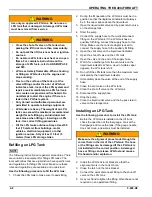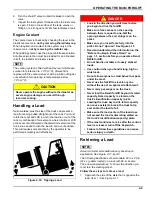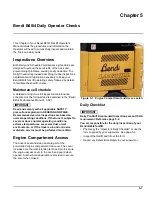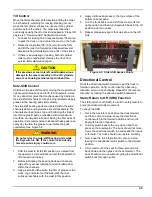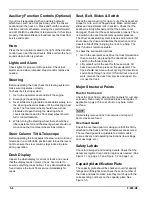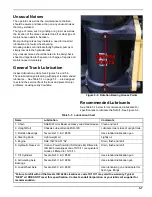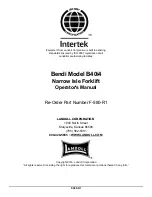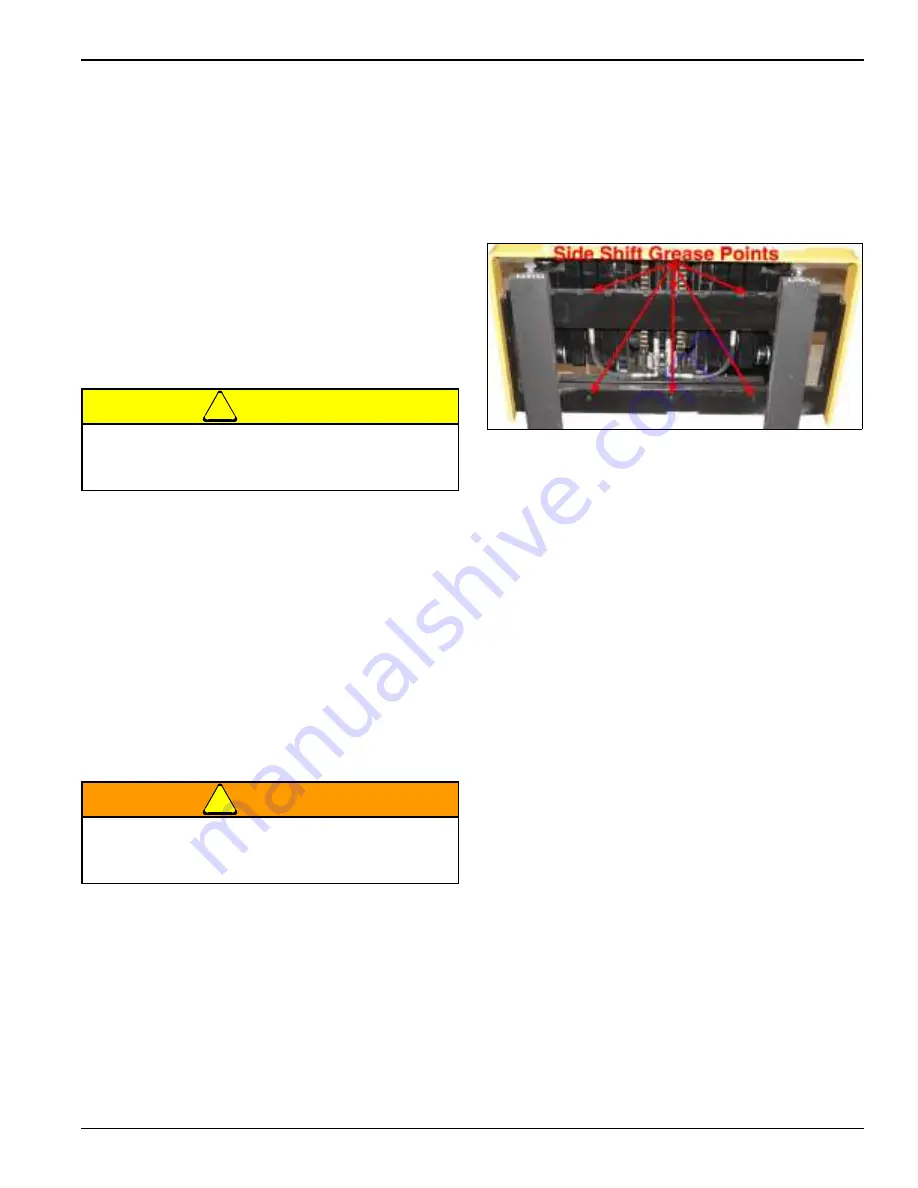
5-5
Tilt Control
Move the tilt mechanism both directions, tilting the mast
to both extents, watching for racking. Racking occurs
when the tilt cylinder strokes are uneven (One cylinder
bottoms before the other). The mast rails then twist,
eventually causing them to crack and separate. Proper tilt
degree is 3° forward and 3° backward maximum.
1.
To check for racking find a reasonably level floor area
to park the truck on and center the mast on the truck.
2.
Raise the mast about 36” (914 mm) from the floor
and tilt the mast full forward and backward several
times watching for twisting at the ends of the stroke.
3.
If there is any twisting or racking, both tilt cylinder
rods must be readjusted. Remove the truck from
service immediately and repair.
CAUTION
Side-Shift Control
Hold down the side shift control, moving the mast left and
right several times back and forth to both extents. Listen
for any abnormal noise that maybe caused by binding in
the side-shift mechanism. If any binding is detected apply
grease to the bearing pads immediately.
The side shift bearing pads are located within the slide
channels above and below the side shift assembly. The
channels are lined (sides, top and bottom) with strips of
low-friction plastic pads, embedded with molybdenum
di-sulfide, an inorganic lubricant. During the first week of
operation it is recommended to lubricate these pads once
every day to allow the grease to permeate the pads
completely. See Figure 5-5.
WARNING
1.
Shift the mast to its full left position, as viewed from
the operator’s compartment and set the Keyswitch to
off and remove the key.
2.
Before lubricating the bearing pads and channels
wipe off any excess lubricant and dirt buildup from
within the channels.
3.
Using a small brush paint a thin film of grease to the
sides, top and bottom of the side-shift channel
surfaces reachable with the mast in this position.
4.
Apply a little extra grease to the top surface of the
bottom channel pads.
5.
Turn the truck back on and shift the mast to its full
right position and then turn Keyswitch back to the off
position and remove key.
6.
Repeat grease procedure that was done on the left
side.
Figure 5-3: Side Shift Grease Points
Directional Control
Rock the directional switch forward to put the truck in
forward operation. Verify control input by observing
direction arrow on dash display. Repeat for the reverse
direction by rocking the direction switch backwards.
Static Return to Off (SRO) Function
The static return to off (SRO) is a built in safety feature to
prevent accidental truck movement.
To check the SRO:
1.
Get in the operator’s seat, drive the truck forward,
and then come to a stop. Leave the directional
control switch in the forward position and turn the
Keyswitch to the off position.
2.
Turn Keyswitch back to the on position and then
press on the accelerator. The truck should not move.
Cycle the directional switch to neutral and then back
to forward. The truck should now operate correctly.
3.
Next, drive the truck forward and come to a stop
leaving the directional control switch in the forward
position.
4.
Lift yourself out of the seat for three seconds. Sit
back down and then press on the accelerator. The
truck should not move without cycling the directional
switch back through neutral.
If the previous scenario is left unattended serious
damage to the mast assembly or the tilt cylinders
can occur causing extensive repair/downtime.
Do not service the side-shift bearing pads while
the Keyswitch is ON. If the control is accidently
moved serious injury could occur.
Summary of Contents for Bendi B40i4
Page 2: ......
Page 12: ...1 4 F 808 R0 FORKLIFT SAFETY AND FAMILIARITY Figure 1 2 Decals...
Page 18: ...1 10 F 808 R0 FORKLIFT SAFETY AND FAMILIARITY Table provided for general use NOTES...
Page 24: ...2 6 F 808 R0 RECEIVING AND INSPECTION Table provided for general use NOTES...
Page 54: ...4 16 F 808 R0 OPERATING THE B40I4 FORKLIFT Table provided for general use NOTES...
Page 62: ...5 8 F 808 R0 Figure 5 5 Lubrication Points...
Page 64: ...5 10 F 808 R0 Table provided for general use NOTES...


